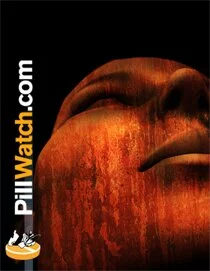
The disease that will be observed below is probably one of the most unpleasant one. Except affecting human body, it affects ones emotional health. Redness, pimples, bumps on the nose and inflammation of the face that may spread on eyes, ears and neck, produce depressing effect on people. And those experiencing these symptoms are often affected by depression, avoid being socialized and prove the general decrease of life quality
All the mentioned above symptoms are the reveals of rosacea, the chronic disease that affects facial skin and sometimes eyes. The causes of the rosacea vary, it is commonly considered that it mostly affects fair-skinned people, women in their menopausal period (the hot blushes produce blood vessels dilation). In some cases the disease is also assumed to be a neurological disorder that results from hypersensitization of sensory neurons, which is the cause of intestinal bacteria, acting in the digestive tract. Rosacea can also be genetically inherited condition. External reasons include hot or spicy foods and drinks, alcohol consumption, heat (including hot baths), strenuous exercise, sunlight, very cold temperatures, wind and long-term use of topical steroids on the face.
Subtypes of rosacea vary depending on the symptoms and general reveal of the disease. It is important for the dermatologist to define the rosacea type to choose proper treatment.
Erythematotelangiectatic rosacea is defined by the permanent redness, which is the result of a tendency to flushing and blushing. Small vessels located near the skin surface get dilated and become visible; this is often accompanied by itching and burning, some swelling and feeling of warmth. Tetracycline antibiotics and topical antibiotics fight with the mentioned symptoms. α-2 agonist clonidine is used against blushing and flushing; as an alternative to it the Monoxidine can be applied it has less side effects, though, at the same time, is reported to be less effective than the first one. Note, that oral antibiotics act faster than the topical ones. The earlier you start the treatment, the less is the risk of the further vessels enlargement.
Permanent redness with bumps (also known as papules) containing pus (pustules) refers to another rosacea type - papulopustular rosacea. Papules and pustules are also treated with oral and topical antibiotics. Isotretinoin has proved to be the most effective in fighting these conditions; but the doses should be small because the medicine has many side effects. While papules and pustules respond to treatment, redness and flushing is less likely to show improvement.
When bumps on the nose reveal and it becomes enlarged (this condition is also known as rhinophyma and more commonly occurs in men) it is the phymatous rosacea. This condition may be accompanied by the thickening of the skin of chin, ears, forehead and cheeks and blood vessels redness. Laser surgery is commonly used to fight with the mentioned symptoms and improve the appearance.

Most of the people experiencing rosacea have eye conditions caused by the disease. The symptoms are dryness, itching, burning, redness, tearing and sand-in-an-eye sensation, the eyelids often get inflamed and swollen. Oral antibiotics are prescribed for these cases, and doctors often suggest scrubbing eyelids with diluted baby shampoos and applying warm compresses.
Though rosacea cant be fully cured, it can definitely be treated and controlled. Address to the specialist as soon as you notice some disorder on your face the earlier you begin resolving the problems, the better are the chances to avoid more serious troubles.
Diana L.
| Tip for you : Sign-in with Your OpenID and post faster, easier and with easy access to all your past posts. | |
|
Your Nick: |















